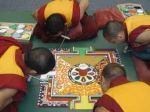
Social media
This story that covers a Decatur, Ga., resident who has ALS, by Marketwatch reporter Anya Martin, is amazing in the simplicity of bringing together new technology and social media. ALS is a tragic disease that eventual disables a person from use of muscles, and the courage and resolve of ALS patients is inspiring.
Martin writes about how David Jayne is able to communicate with friends via social media and has a “Bluetooth-enabled sensor in his jaw.
Jayne can communicate with friends, family and strangers through email, instant messaging, Facebook, Twitter and blogging, says the story posted on the WSJ web site. The storys says, “Others in the later stages of ALS can type or speak electronically by directing key strokes or cursors with their eyes in what’s called an eye-gaze system. Because even eye muscles eventually may fail, researchers also are experimenting with brain-computer interface devices that translate electrical activity within the skull into dialogue when users concentrate on characters on a monitor.”
The most famous person with an ALS-related disease is Stephen Hawking, the physicist who uses advance technology to help him communicate. Stories of courage and optimism will certainly include Hawking for years to come.
And, check out Hawking’s ideas on time machines on MSNBC – wormhole “tunnels, unfortunately, are far too small for people to pass through — just a billion-trillion-trillionths of a centimeter — but physicists believe it may be possible to catch a wormhole and make it big enough for people, or spaceships, to enter, Hawking writes.”
Learn more about ALS at the ALS Association web site.
Filed under: Inspiration | Tagged: ALS, courage, inspiration, social media, Stephen Hawking | Leave a comment »









